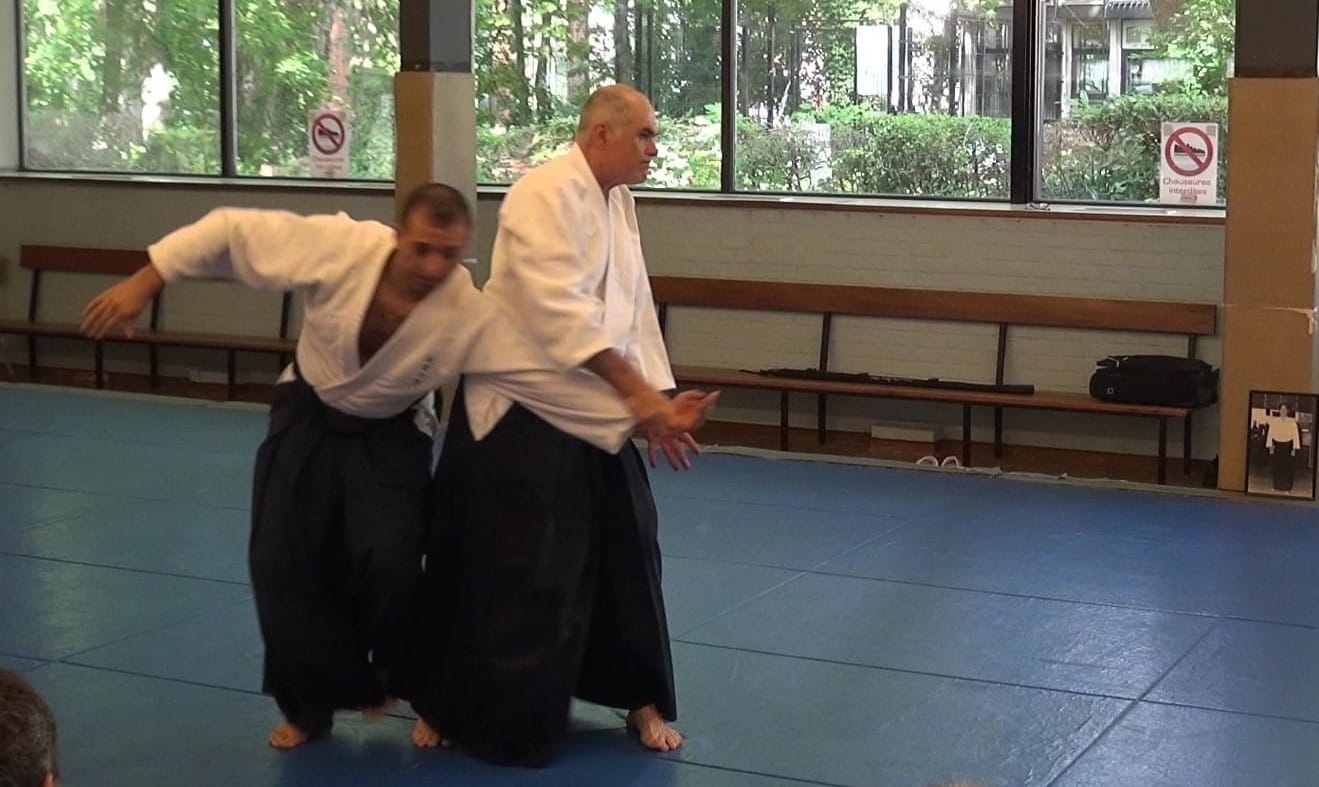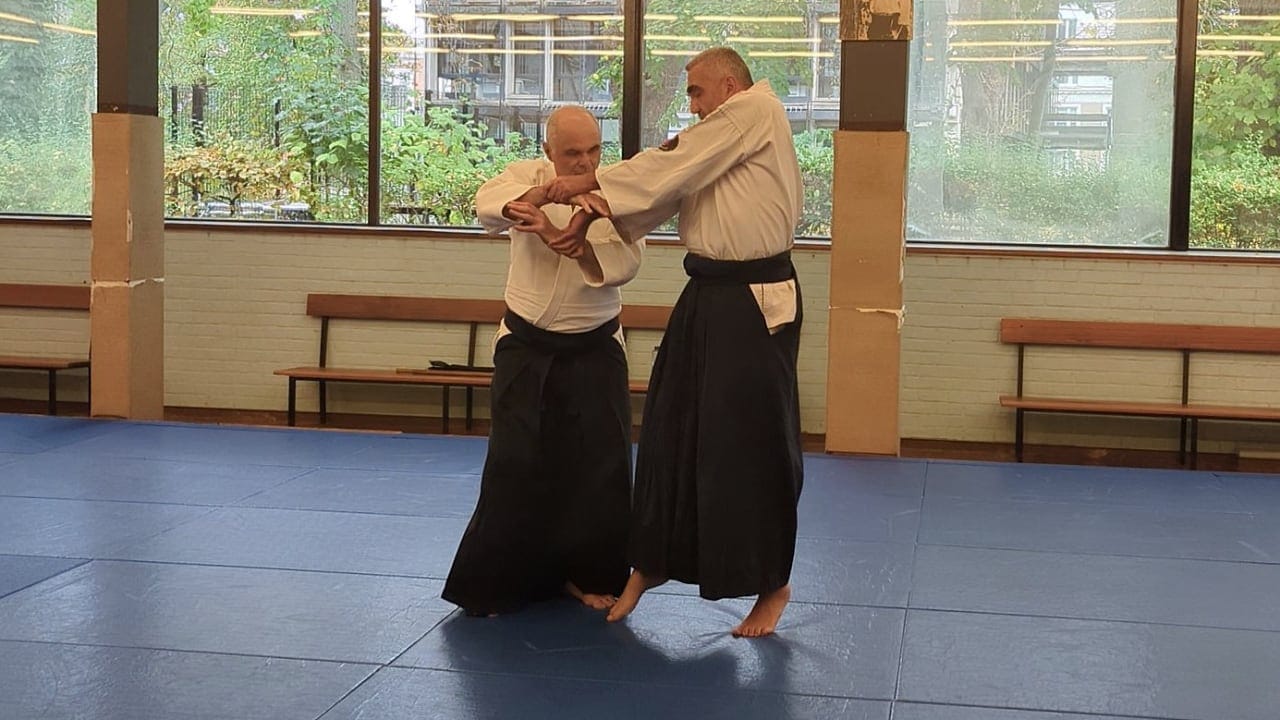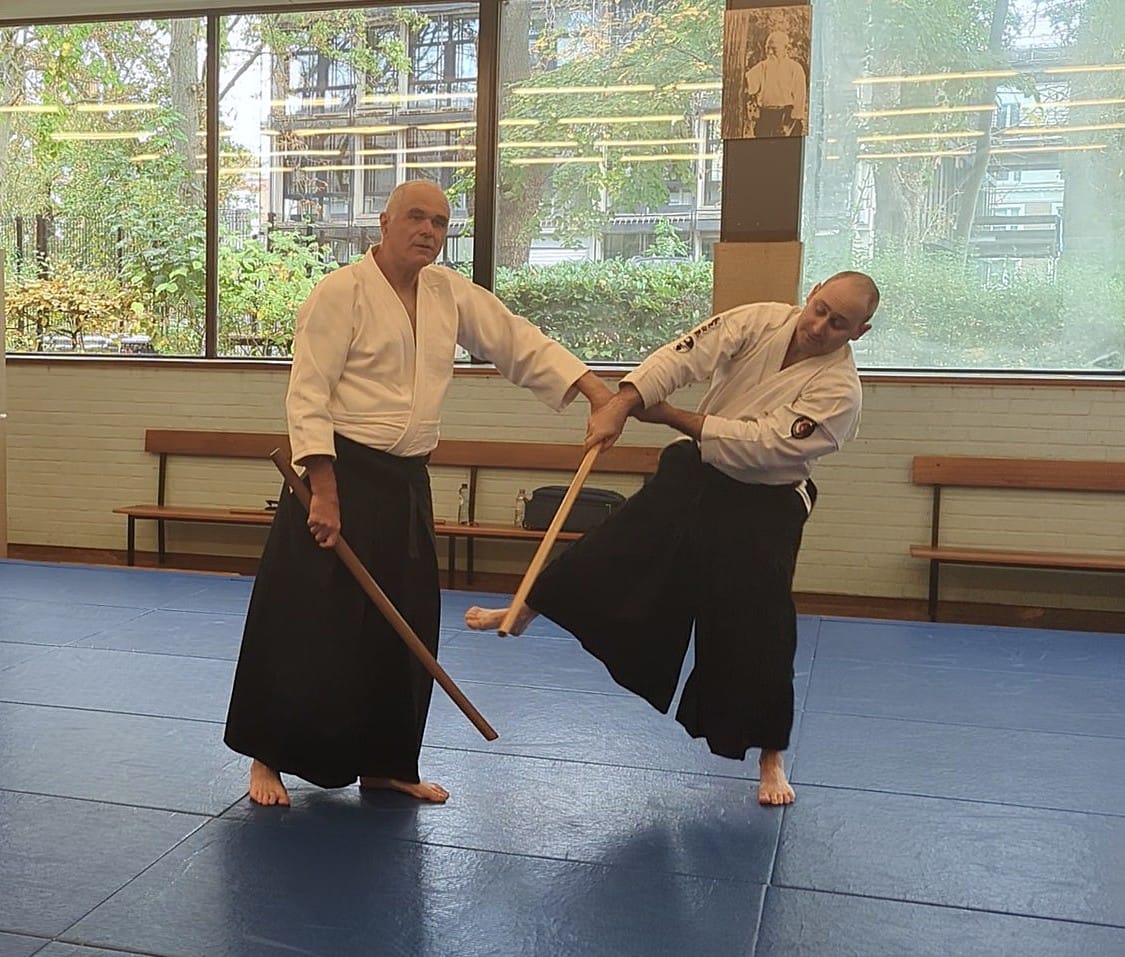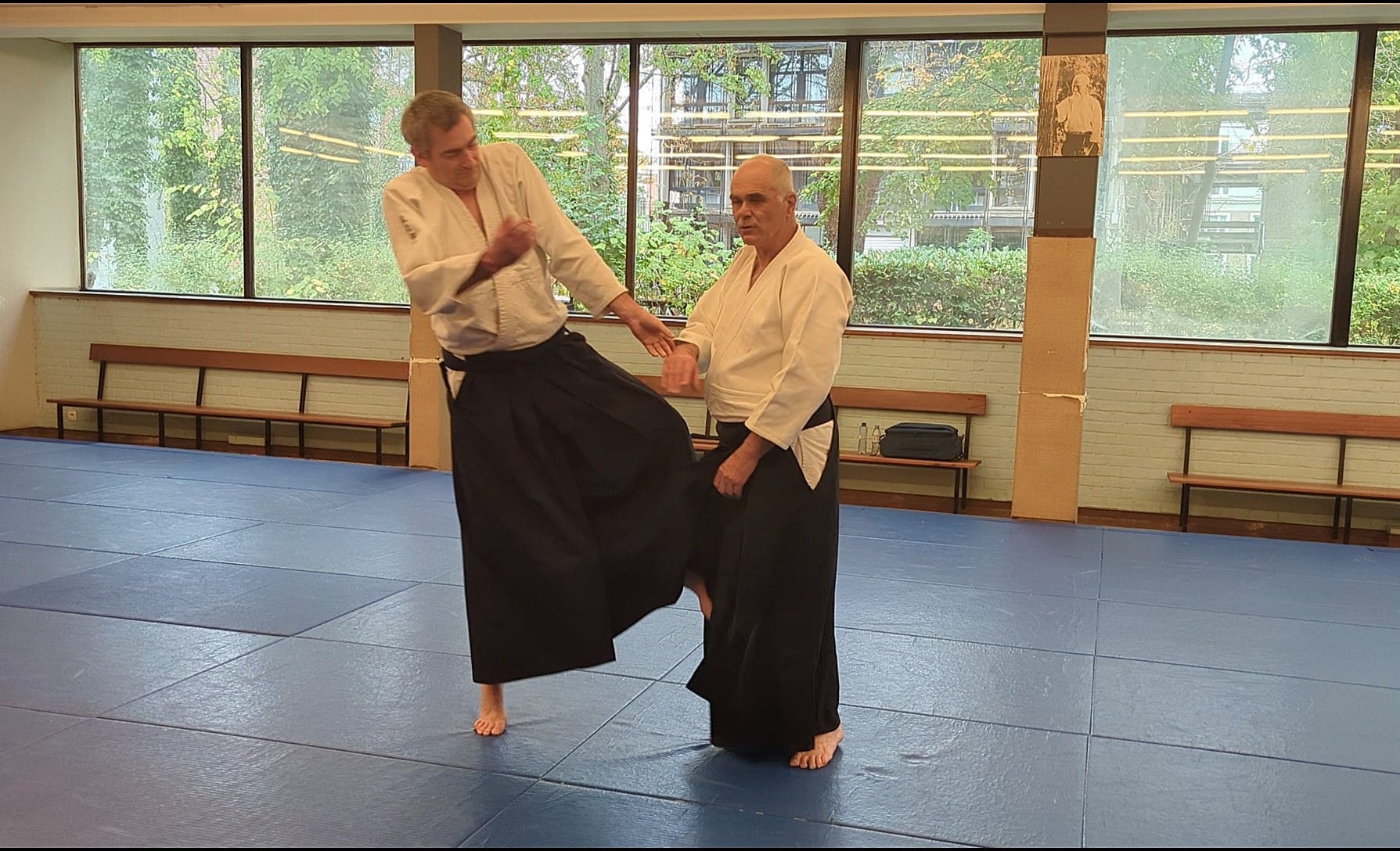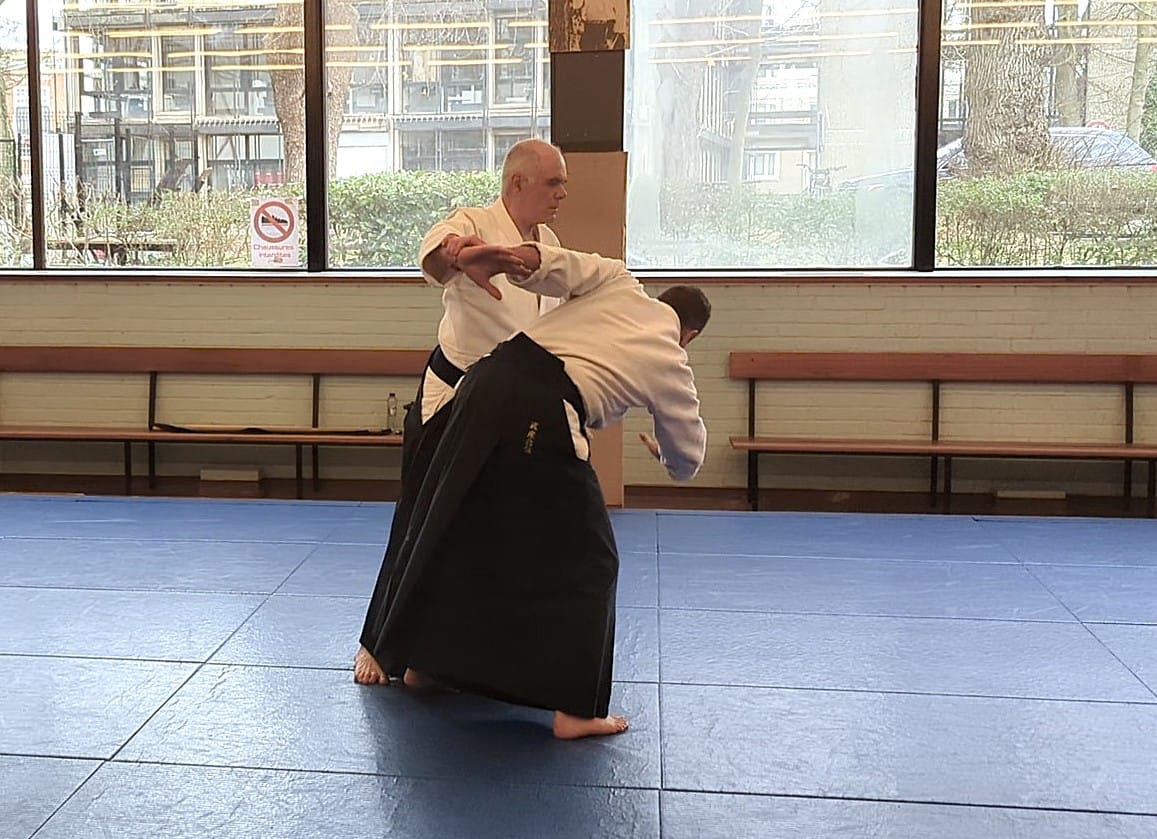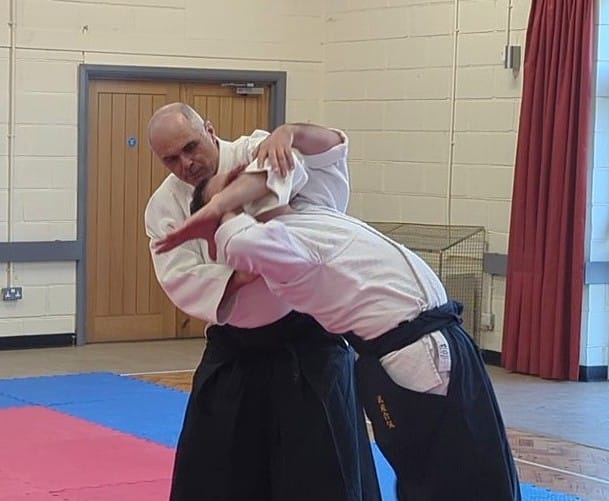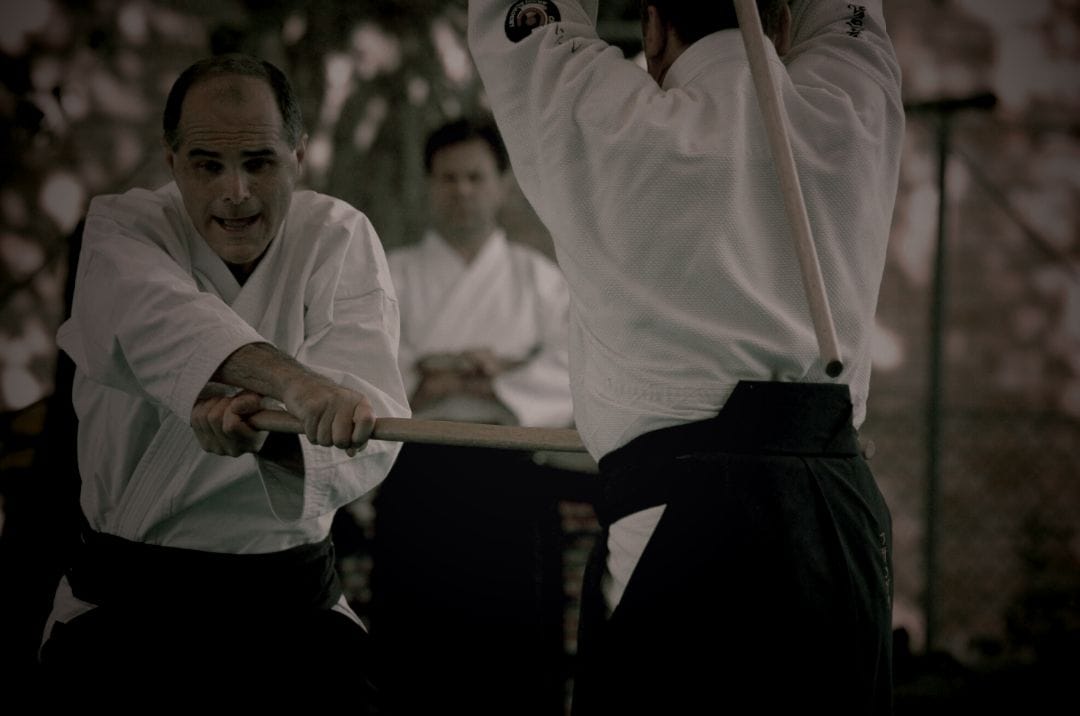As soon as you name something you miss it. This is undoubtedly why O Sensei's speeches were so difficult to understand; he didn't name anything.
But in order to purge our preoccupation with understanding an action by breaking it down, even if it means coming back to these relative notions one day, it's worth remembering that we can act at different moments in the dynamic generated by the opponent.
Traditionally in Japan, three levels of practice are taught:
- Acting in reaction to the opponent's attack, which is go no sen,
- Acting during the development of the opponent's attack, which is tai no sen,
- Acting in anticipation of the opponent's attack, which is sen no sen.
The video here illustrates tai no sen with the ushiro ryote dori kote gaeshi technique:
Go no sen involves kotai-type practice: the opponent has had time to apply his force and you have to deal with it.
Tai no sen involves jutai-type practice: union with the dynamics of the opponent's movement, conforming to the flow of his energy (ki no nagare).
Sen no sen involves kitai-style practice: it is no longer a question of harmonising with the opponent's movement, but rather of directing his movement, through the body and the mind.
You can understand the difference between go no sen and tai no sen from an intellectual point of view, even if you don't understand it with your body, but it is impossible to understand sen no sen from an intellectual point of view. Only a practice in which the body and mind manage to unite can lead to an understanding of this type of action. This was the level at which O Sensei evolved.

